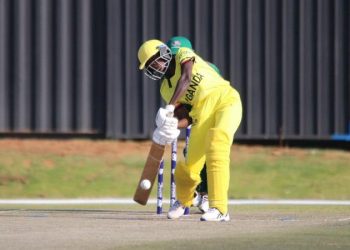The confusion around the terms “federation” and “association” in Uganda’s sports sector has sparked confusion and controversy. This confusion was further fueled with the passing of the National Sports Act which prominently keeps referring to the two terms.
According to Robert Jjagwe, President of the Uganda Table Tennis Association (UTTA), this misunderstanding is rooted in a lack of clarity about the structural requirements for each designation.
JJagwe explains that an association is a body formed by clubs that come together to promote and regulate a specific sport.
For example, UTTA is an association made up of table tennis clubs across the country. A federation, however, is a more advanced entity formed when regional associations—representing different parts of the country—come together to create a unified governing body.
“For an organization to be a federation, it must have regional associations in Central, Northern, Eastern, and Western Uganda. These associations federate to form a single entity. This structure ensures national representation, unlike an association, which is primarily made up of individual clubs,” Jjagwe notes.
He points to FUFA (Federation of Uganda Football Associations) as a correct example of a federation because it operates through zonal structures that bring together football clubs from all regions of the country.
Similarly, the Federation of Motorsports Clubs of Uganda fulfills the definition of a federation.
However, Jjagwe highlights that some organizations, like the Uganda Netball Federation, are still commonly referred to as the Uganda Netball Association, reflecting the historical confusion surrounding these terms.
Adding to the complexity is Uganda’s new sports law, which introduces the term “federate” but fails to define it clearly.
This, Jjagwe argues, has created loopholes, allowing some organizations to label themselves as federations despite lacking the regional representation required.
“The law seems to suggest that percentage coverage or the number of clubs is sufficient to qualify as a federation, but that’s not the case. True federations are built on regional representation,” he explains.
Jjagwe warns that this lack of clarity could undermine governance and international recognition of Uganda’s sports bodies.
He stresses the need for consistency, pointing out that clear governance structures are vital for credibility and growth.
“When organizations misname themselves, it creates doubts about their legitimacy. This can affect their ability to secure funding, partnerships, and international recognition,” he says.
To resolve this, Jjagwe calls for stricter enforcement of definitions within the sports law and better education of stakeholders.
“The Ministry of Sports and the National Council of Sports must take the lead in educating sports organizations about these distinctions. Federations must have regional associations, while associations should focus on club governance,” he advises.
Jjagwe also emphasizes the importance of aligning with international best practices to ensure Uganda’s sports sector thrives.
By addressing these terminological and structural issues, he believes the country can create an environment that empowers athletes, administrators, and organizations to achieve sustainable growth and success.





























